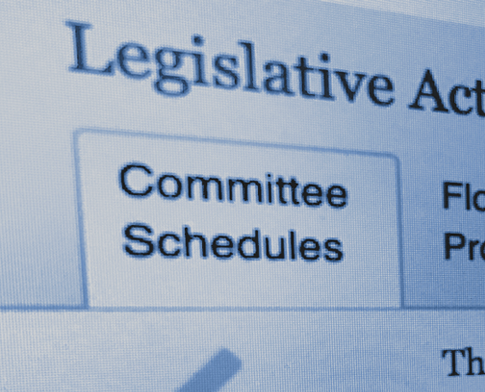Trade Update (October 5)
US, Mexico, Canada Agreement (USMCA)
Canada and the US reached an agreement on NAFTA 2.0, despite reports the two countries were unlikely to meet the US-imposed September 30th deadline. USTR Lighthizer and Canadian Foreign Affairs Minister Freeland announced, “Today, Canada and the United States reached an agreement, alongside Mexico, on a new, modernized trade agreement for the 21st Century… USMCA will give our workers, farmers, ranchers and businesses a high-standard trade agreement that will result in freer markets, fairer trade and robust economic growth in our region. It will strengthen the middle class, and create good, well-paying jobs and new opportunities for the nearly half billion people who call North America home.”[i]
The re-negotiated deal has a new name: The United States-Mexico-Canada Agreement (USMCA), but many key provisions from the original NAFTA remain intact:
Canada successfully negotiated for the preservation of the state dispute resolution system. NAFTA provided a mechanism for settling investment disputes “in accordance with the principle of international reciprocity and due process before an impartial tribunal.”[ii] One minor change is that the investor-state dispute-settlement system will be phased out for the US and Canada but remain in place for certain industries to bring cases against Mexico.[iii]
The United States dairy industry earned access to new markets and will expand international sales with the elimination of Canadian milk classes 6 and 7. These designations allow cheap dairy ingredients to undersell the US in Canada and developing country markets.[iv]
The automotive rules say saw the highest degree of change in USMCA. Under NAFTA, 62.5% of automotive content had to be made in North America to quality for duty-free treatment. Under USMCA, that requirement was increased to 75% with a further requirement that 40-45% of the 75% content threshold be made by workers who earn at least a $16 hourly wage. The wage requirement will take effect gradually over the next five years.[v]
Since NAFTA was negotiated 24 years ago, there were important digital trade updates that were necessary to bring NAFTA into the 21st century. The internet has become a huge platform for commerce. USMCA promotes cross-border data flows by promoting the cross-border transfer of digital information. It should be noted that the Trans-Pacific Partnership, which President Trump withdrew the US from, contained a general principle promoting cross-border data flows. Article 14.11(2) of the TPP reads, “Each party shall allow the cross-border transfer of information by electronic means.” USMCA takes a step further by stating, “No party shall prohibit or restrict the cross-border transfer of information by electronic means if this activity is for the conduct of the business of a covered person.”[vi] USMCA also contains modernized protections on intellectual property (IP).[vii]
The agreement contains a sunset clause that would automatically terminates the agreement after 16 years, with a required review between the three countries within the first 6 years. It is possible that an agreement within the first 6 years could lead to a renewal of the sunset clause, which would create another 16-year term. The United States initially pushed for a hard five-year sunset.[viii]
With a new Mexican president taking office in December and the November midterm elections for the US Congress, the approval timeline for the agreement is unclear. Congress used the Trade Promotion Authority (TPA) to direct the executive branch on the tri-lateral free trade agreement. TPA requires the president to keep Congress informed about the negotiations and gives Congress a yes or no vote on the agreement.[ix] Canadian Prime Minister Justin Trudeau and Mexican President Enrique Peña Nieto will likely sign the agreement before the end of the year, but the US Congress is unlikely to ratify the agreement before 2019. The fate of the agreement rests in the hands of Congress, and Republicans may be eager to vote sooner rather than later. If Democrats take control of one or both chambers in the midterm elections, Republicans in the 115th Congress will likely schedule a vote during the lame duck session. However, TPA requires that the International Trade Commission (ITC) review the potential economic impact of USMCA and prepare a report within 105 days. There are only 70 days left in the 115th Congress.[x]
Section 232 and USMCA
Despite successfully renegotiating the tri-lateral agreement, Canada and Mexico must still pay the Section 232 steel and aluminum tariffs. The USMCA is a free trade agreement, but the 232 tariffs fall under a different section of trade law, that allows the president to restrict imports or impose tariffs for national security reasons. During the press conference on Monday (1 Oct), President Trump said, “until such time as we can do something that would be different, like quotas, perhaps, so that our industry is protected” the steel and aluminum tariffs will remain in place.[xi]
Commerce Secretary Wilbur Ross told Fox Business News that there is no timeline for removing the 232 tariffs. However, he said, “there’s a provision in here that if we put in a [Section] 232 on automobiles in the future, there will be an exemption of current levels from within the Canadian, Mexican manufacturing.”[xii]
[i] “Joint Statement from United States Trade Representative Robert Lighthizer and Canadian Foreign Affairs Minister Chrystia Freeland.” USTR, 30 Sept 2018. https://ustr.gov/about-us/policy-offices/press-office/press-releases/2018/september/joint-statement-united-states
[ii] “Overview of the Dispute Settlement Provisions.” NAFTA Secretariat, 2014. https://www.nafta-sec-alena.org/Home/Dispute-Settlement/Overview-of-the-Dispute-Settlement-Provisions
[iii] Bob Bryan. “The US, Canada, and Mexico’s new trade pact looks a lot like NAFTA. Here are the key differences between them.” Business Insider, 1 Oct 2018. https://www.businessinsider.com/us-canada-mexico-trade-deal-usmca-nafta-details-dairy-auto-dispute-resolution-2018-10
[iv] “UNITED STATES-MEXICO-CANADA TRADE FACT SHEET Strengthening North American Trade in Agriculture.” USTR, 1 Oct 2018. https://ustr.gov/about-us/policy-offices/press-office/fact-sheets/2018/october/united-states%E2%80%93mexico%E2%80%93canada-trade-fa-2
[v] Jack Caporal and William Reinsch. “From NAFTA to USMCA: What’s New and What’s Next?” CSIS, 3 Oct 2018. https://www.csis.org/analysis/nafta-usmca-whats-new-and-whats-next
[vi] Jacqueline Yin, “Cross-Border Data Continues to Flow under the USMCA.” Disruptive Competition Project, 5 Oct 2018. http://www.project-disco.org/21st-century-trade/100518-cross-border-data-under-the-usmca/#.W7efdGhKjGg
[vii] “UNITED STATES-MEXICO-CANADA TRADE FACT SHEET Modernizing NAFTA into a 21st Century Trade Agreement.” USTR, 1 Oct 2018. https://ustr.gov/about-us/policy-offices/press-office/fact-sheets/2018/october/united-states%E2%80%93mexico%E2%80%93canada-trade-fa-1
[viii] Dattu, Glossop, Sathananthan, Atwal. “The U.S.-Mexico-Canada Agreement: An overview of what’s changed and what remains the same.” Osler, 2 Oct 2018. https://www.osler.com/en/resources/cross-border/2018/the-u-s-mexico-canada-agreement-an-overview-of-what-s-changed-and-what-remains-the-same
[ix] “Trade Promotion Authority.” USTR. https://ustr.gov/trade-agreements/other-initiatives/Trade-Promotion-Authority
[x] Megan Cassella. “NAFTA 2.0’s long road to completion.” POLITICO, 1 Oct 2018. https://www.politico.com/interactives/2018/naftatimeline/
[xi] Danielle Bochove, Josh Wingrove, and Joe Deaux. “With Renewd Nafta Deal, Trump Opens Door to Metal Tariff Accord.” Bloomberg: 1 Oct 2018. https://www.bloomberg.com/news/articles/2018-10-01/with-nafta-sorted-focus-shifts-to-aluminum-and-steel-tariffs
[xii] Steve Goldstein. “Wilbur Ross says steel, aluminum tariffs to stay in place.” MarketWatch: 1 Oct 2018. https://www.marketwatch.com/story/wilbur-ross-says-steel-aluminum-tariffs-to-stay-in-place-2018-10-01
HOUSE.GOV
The Week Ahead
For the main events of the next week and more, go straight to the key events on the house.gov website.
SENATE.GOV
The Week Ahead
For the main events of the next week and more, go straight to the key events on the senate.gov website.


